The fourth installment of the series covers the relatively short stretch from Hampi to Aihole and onwards to Pattadakal and Badami. All three places are home to fantastic temple sites – each very different.
We set off from Hampi quite early in order to avoid the midday heat, at least at our first stop. However, the whole of south-western India experienced unusually hot weather at the time – the first week of March – and the thermometer was already heading for the mid-thirties Centigrade by the time we began our exploration of Aihole. Fortunately, the humidity level was quite low.
Aihole is little more than a village, but there are well over one hundred temples in the area. It is often referred to as the cradle of Indian temple architecture, because many of the structures were experimental in nature – built partly only to try out some new ideas. Most of the temples date from the period between the 5th and the 8th century, when the Chalukyas started to gain power over large parts of the Deccan.
Probably the most famous monument at Aihole is the Durga Temple, noteworthy particularly because of its highly unusual oblong, apsidal shape.
The photo below shows a side view of the temple (on the right of the picture) in which the semi-circular part can be clearly seen.
The photo also shows the setting of the Durga Temple, at the edge of a much larger complex comprising a number of other temples. Below are two further photos from the site. How the architects experimented with different types of roofs is very evident in these two shots.
There is also a deep stepwell at the site.
One of the oldest structures at Aihole is the Ravani Phadi cave temple. It has an especially lovely setting, about 400m away from the Durga site.
Some of the sculptures inside reminded us of the artwork in Egyptian temples we had visited in the past.
Of the numerous temples at Aihole, some are right in the middle of inhabited areas, amongst farmhouses and their outbuildings.
We were told that this might be one of the reasons why Aihole does not presently have UNESCO World Heritage status, whereas Pattadakal – our next destination – has been on the list since 1987.
Pattadakal lies on the banks of the Malprabha river, only some 10 kilometres from Aihole.
The temples here are on a single site and were built slightly later than the ones at Aihole. Pattadakal’s primary role was as a centre for royal festivities and the coronation ceremonies of the Chalukyan kings.
The panorama as you approach the site is very impressive indeed.
Again, there is plenty of evidence of experimentation here, including some small-scale models on which ideas were tried out before larger versions were constructed. Both the south and the north Indian style of temple are represented – the former with the characteristic pyramidal roofs, the latter topped with curved spires.
An ornate example of the northern style is the Jambulinga Temple, pictured below. The carving above the entrance shows a dancing Shiva, accompanied by Nandi and Parvati.
The largest temple at Pattadakal is the Virupaksha Temple. It is south Indian in style and was built in the 8th century to celebrate an important military success. The photo below shows its southern side.
Opposite the main entrance to the Virupaksha Temple is a small pavilion which houses a Nandi statue.
Pattadakal was virtually deserted when we visited the site – it was a rather hot afternoon, though. Below is one of the few photos we took that actually has some other visitors on it.
The mainstay of the local economy appears to be the cultivation and processing of peanuts. Coming from a climate where peanuts do not grow, we could not leave without a photo of some farmers and their harvest.
We reached Badami, our overnight stopping point, in the late afternoon. This left us enough time to explore the famous cave temples. There are five of them – but only four are easily accessible – all on an escarpment facing a large artificial lake just outside the town. The photo at the top of this piece shows the view from this location, with the lake on the right and the town on the left.
You reach the cave temples via several sets of steps from a small car park by the edge of the lake. Below is a shot of the entrance to one of the temples. It is referred to simply as Cave No. 3 and is the largest of them.
All of the temples feature impressive sandstone carvings. The photo below is of the interior of Cave No. 1. The carving on the left of the shot shows Harihara, a fusion of Vishnu and Shiva.
You get good views of Badami and especially the lake from virtually everywhere on the cliff.
After a long day’s sightseeing we decided that we needed a rest. The steps by the lake seemed an ideal spot from which to watch the changing colours as the sun sank lower. The location also gave us good close-up views of the Bhuthanatha Temple at the end of the lake.
Badami does not offer a great deal of choice in terms of overnight accommodation. Our hotel was fairly basic, but perfectly acceptable, and both dinner and breakfast were actually quite good.
Our agenda for the next morning involved exploring the cliff on the opposite side of the caves. This hill has housed a fortress for many centuries. The fort was rebuilt and strengthened in the 18th century by Tipu Sultan, but not much of it remains. A watchtower and some granaries (see below) have recently been restored and there are a number of gateways and parts of walls still in existence.
Monkeys are now in charge.
Rather fittingly, near the bottom of the hill there is a small shrine dedicated to Hanuman, the monkey god.
The highlight on this side of the lake is the Upper Shivalaya Temple, which sits right on top of the cliff and is visible for miles.
There are tremendous views all around. Unfortunately, the smoke from somebody’s fire rendered ours somewhat hazy at the time.
Our final stop this morning was the Mallegitti Shivalaya Temple, which had attracted our attention when we caught a glimpse of it from the watchtower at the fort. It is situated just north of the town and sits on an isolated rock within a small garden area.
The photo below is a close-up of the impressive sculpted panel on one of its side walls.
It is hard to believe that this carving is some 1400 years old.
To be continued with pt.5: Bijapur and Gulbarga

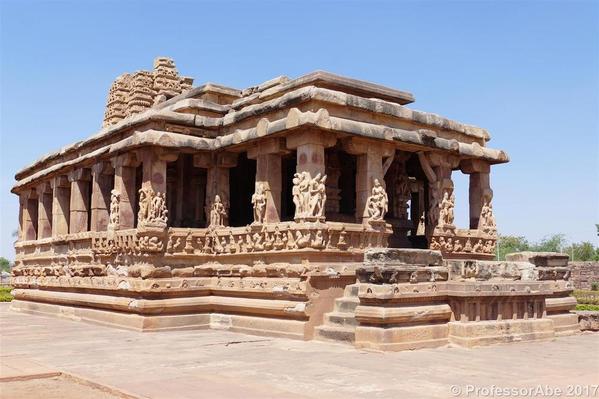
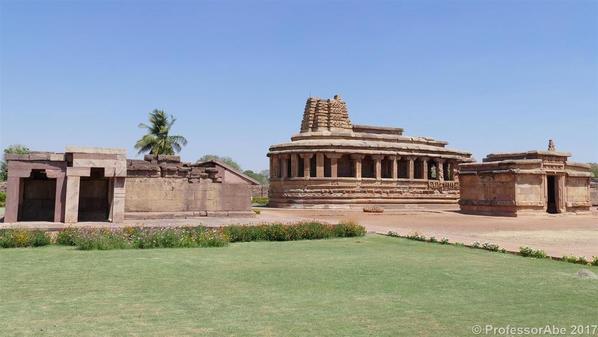
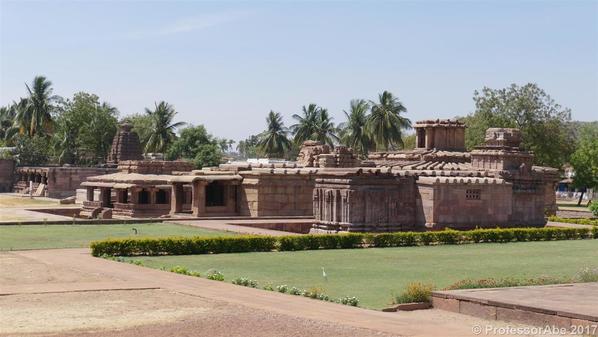
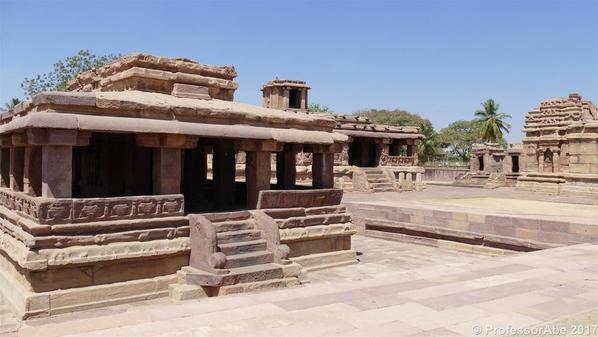
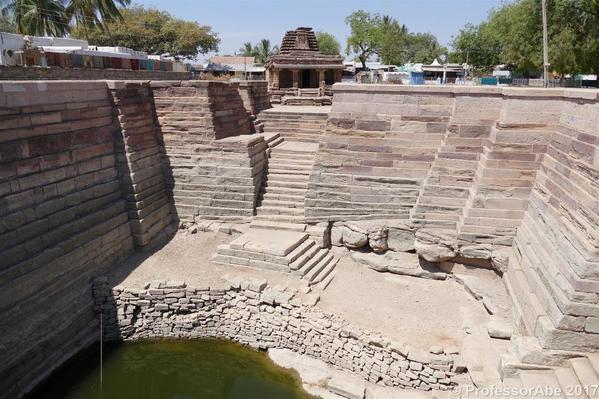
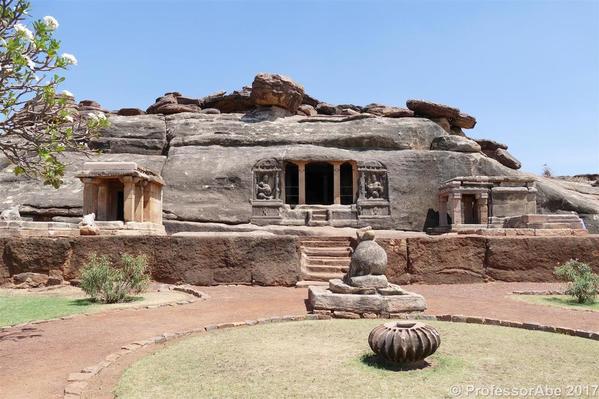
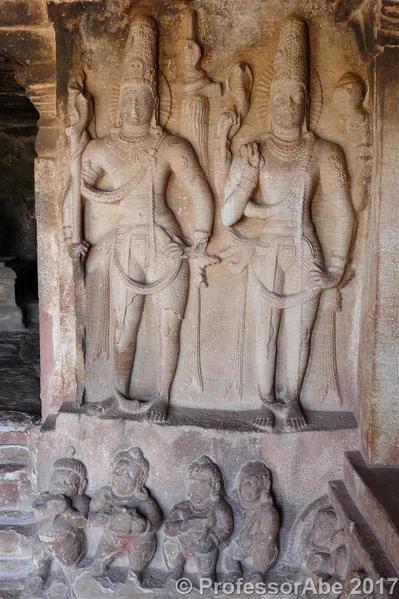
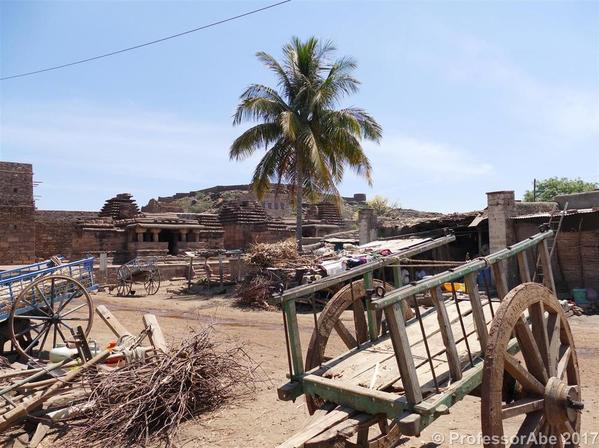
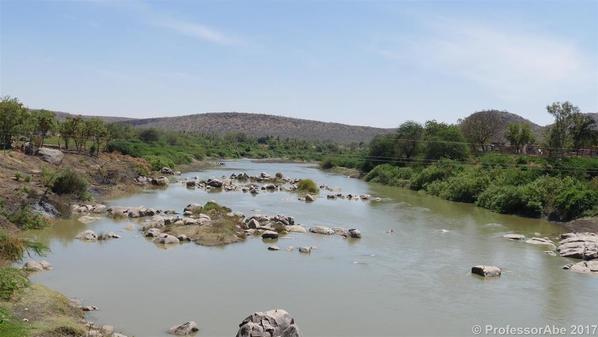
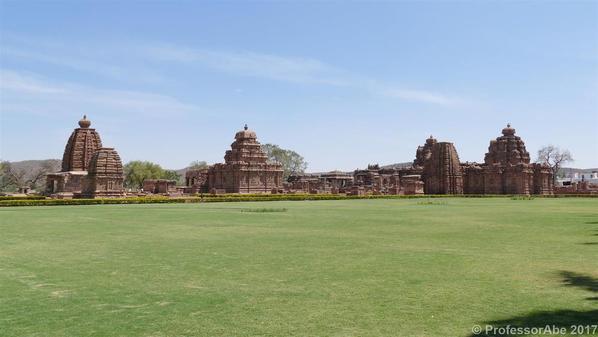
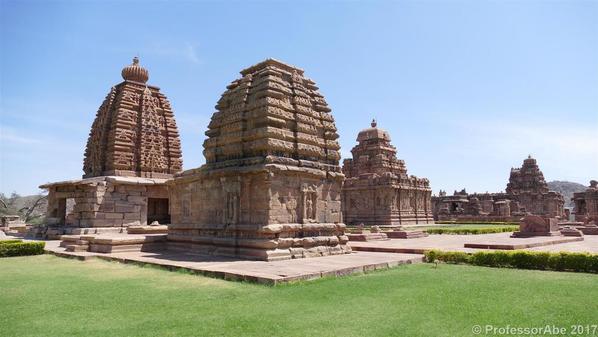
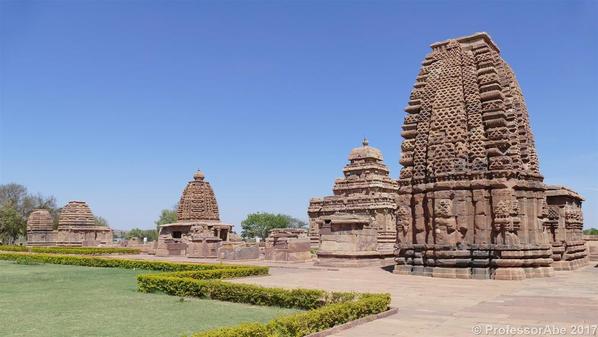
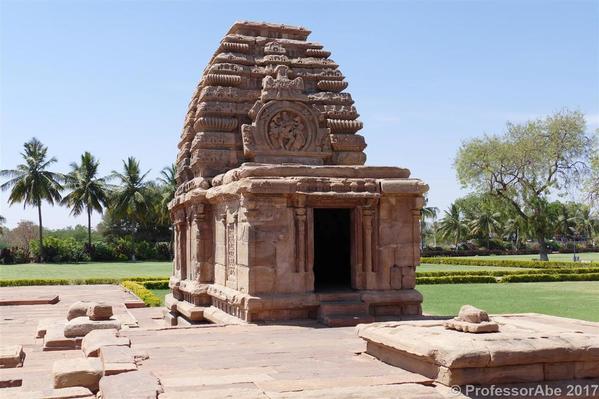
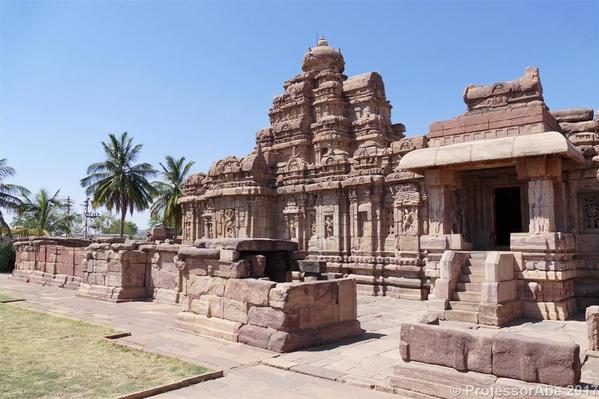
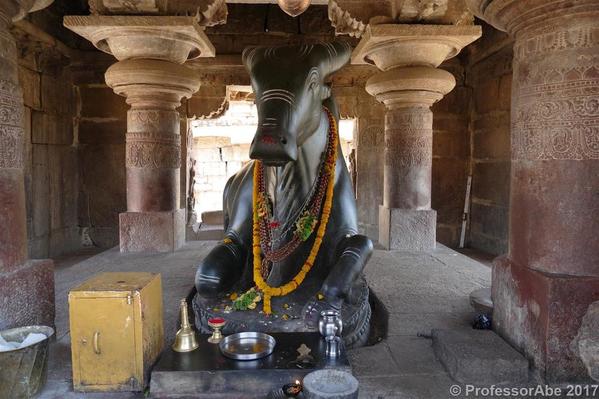
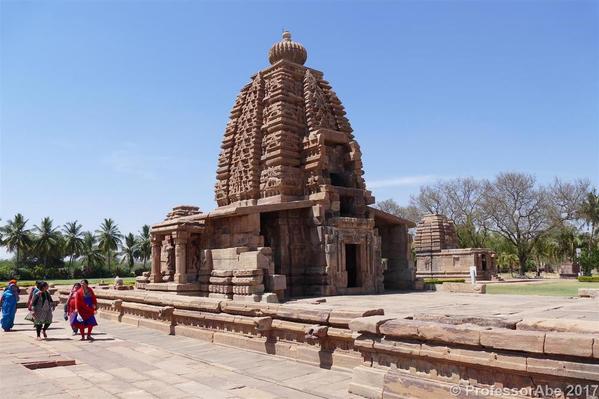
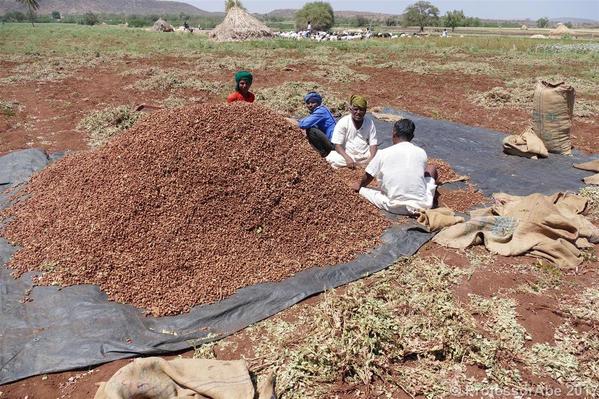
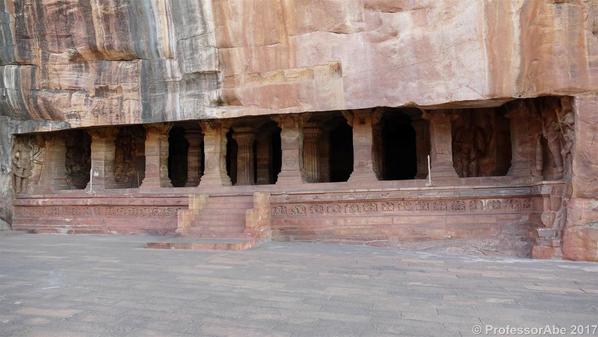
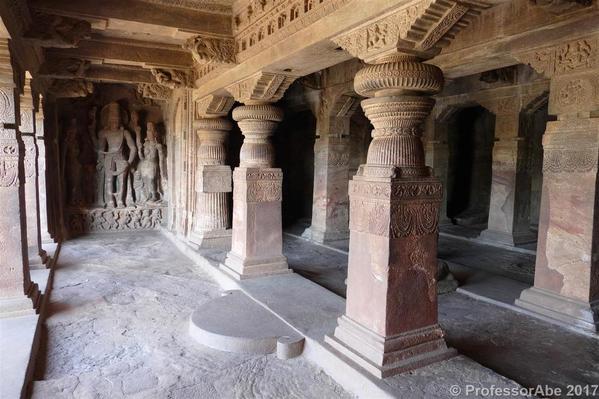
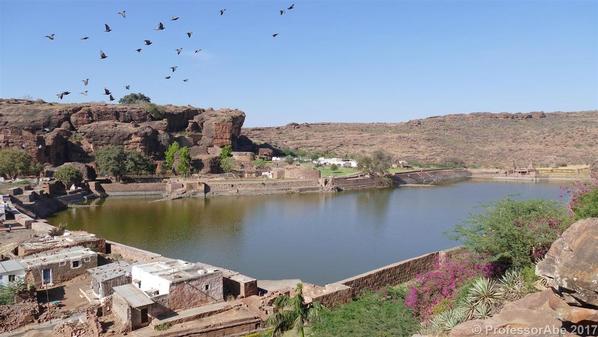
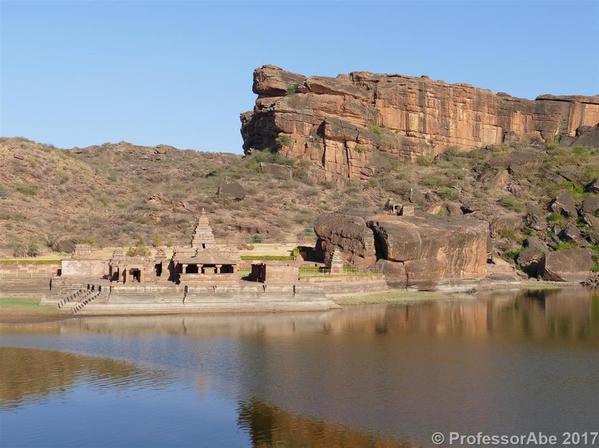
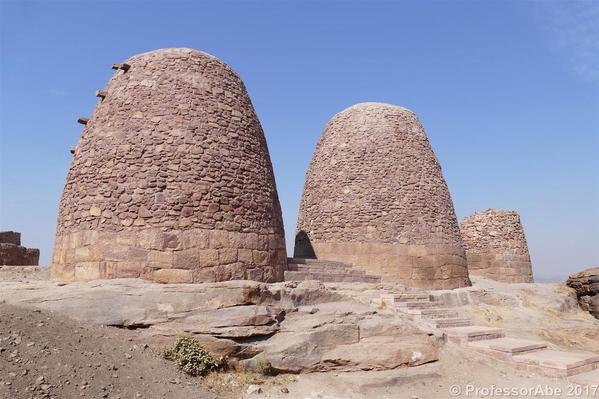
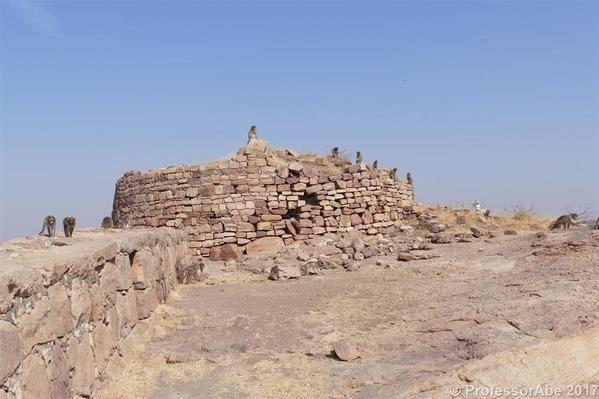
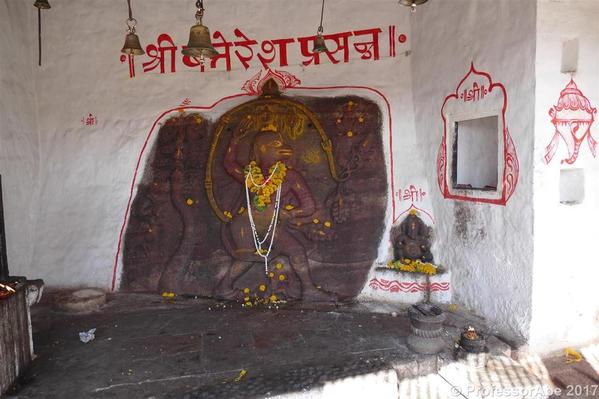
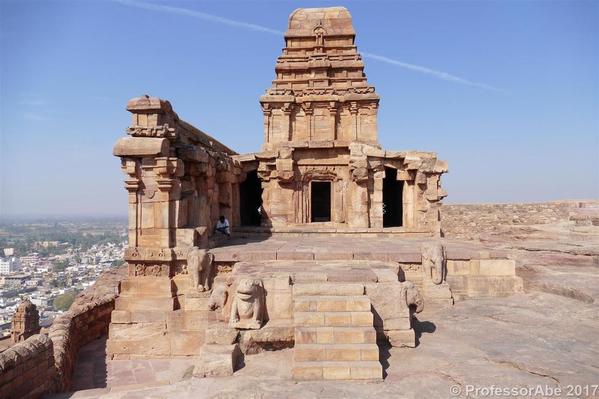
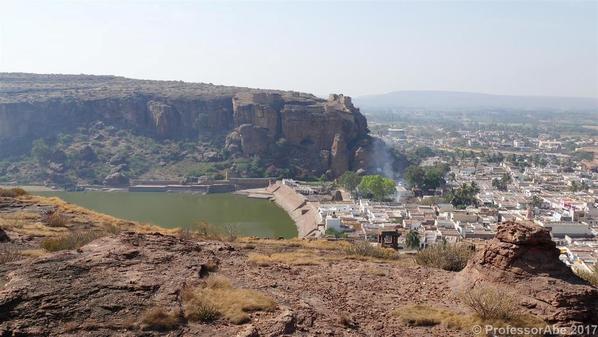
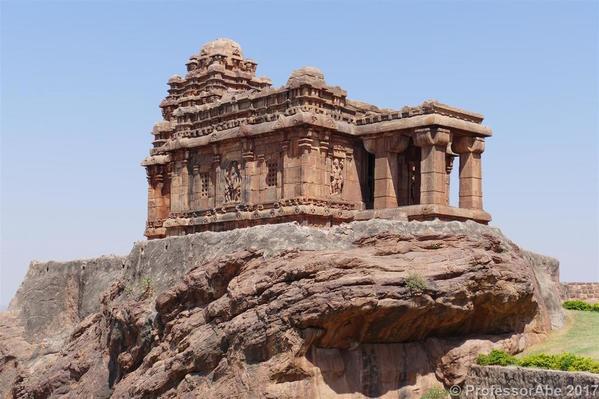
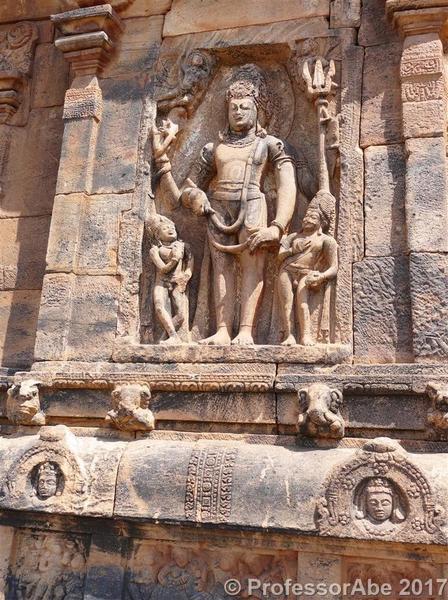
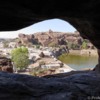




























Comments (0)